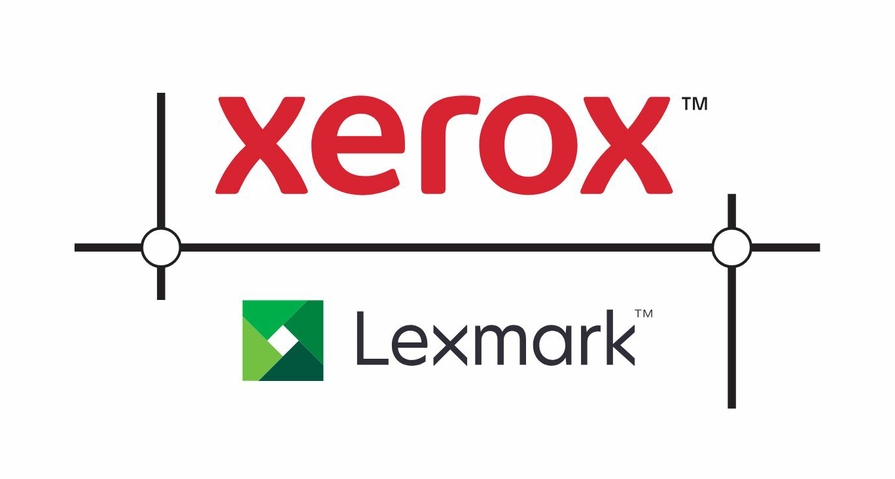
Xerox’s strategic evolution through the Lexmark acquisition
January 10, 2025
Channel, Managed Print Services, Article, Trends
Xerox’s announcement that it is to acquire Lexmark raises a critical question: Will this acquisition be an evolutionary step for the industry or spark broader consolidation and transformation? For this gamble to pay off, Xerox should not position it as purely a hardware play. Success will hinge on its ability to bolster its broader workplace technology and automation solutions and services to ensure the newly combined entity can differentiate strongly in the market.
The acquisition
On 23 December 2024, Xerox announced its agreement to acquire Lexmark International, Inc., from a consortium of investors, including Ninestar Corporation, PAG Asia Capital, and Shanghai Shouda Investment Centre. The deal is valued at $1.5 billion, including assumed liabilities. This acquisition price is significantly lower than the $3.6 billion paid in 2016 for the company, which, at the time, included its enterprise software business. This was later sold off in 2017.
The transaction is expected to close in the second half of 2025, subject to regulatory approvals. Until then, Xerox and Lexmark will maintain their operations as independent companies.
The acquisition arrives at a seminal and pivotal time for both companies. For Xerox, it represents a crucial step in its reinvention journey, seeking to diversify beyond traditional printing and capitalise on emerging technologies. For Lexmark, it provides a lifeline amid the challenges posed by the US government’s sanctions on its majority owner, Ninestar, due to allegations of forced labour in China’s Xinjiang region. These sanctions have significantly impacted Lexmark’s operations and financial performance, making a strategic partnership with a larger player such as Xerox essential for its long-term survival and growth.
Lexmark is expected to strengthen Xerox’s core print portfolio and expand its global print and managed print services business. Lexmark brings a range of complementary products and technologies to Xerox, including A4 colour printers, managed print services, and cloud-enabled imaging and IoT solutions.
The new organisation will serve more than 200,000 clients in 170 countries and have 125 manufacturing and distribution facilities in 16 countries.
Xerox, itself no stranger to challenges, is betting on a turnaround. By combining forces with Lexmark, Xerox aims to achieve cost synergies, expand market reach, and develop more competitive offerings.
A market ripe for consolidation
The print industry is at a critical juncture amid a rapidly evolving technology landscape characterised by automation, AI, cloud infrastructure, heightened security risks, and an increased emphasis on sustainability.
With declining print volumes, hardware commoditisation, and tightening margins, print industry players must fight for relevance in today’s hybrid workplace. Nevertheless, many organisations remain reliant on printing to support key business processes, with 40% of IT decision-makers in Quocirca’s recent MPS study indicating that printing will remain very important to their business in 2025 and a further 37% saying it will be fairly important. This creates an ongoing need for effective, secure, sustainable print technology. From a hardware perspective, the rise of hybrid work has created a stronger need for distributed print infrastructure, where A4 printers and MFPs address customer requirements for workgroup devices, which are part of a balanced deployment with fully featured A3 MFPs.
Traditional print manufacturers must position themselves as technology and digital transformation partners to help customers drive efficiency across their businesses. This means having a broad portfolio of devices to support a distributed print environment and expertise across both direct and indirect channels to deliver workplace automation services and solutions.
Digital disruption is already creating a rapidly consolidating print industry. Over the past year, the market has seen a raft of joint ventures, including the manufacturing joint venture ETRIA between Ricoh and Toshiba and the planned joint venture between Fujifilm Business Innovation and Konica Minolta. Meanwhile, 2024 saw new entrants into the market, with Fujifilm Business Innovation launching in Europe and Katun launching its range of MFPs.
The Xerox-Lexmark acquisition is set to be the most disruptive yet, creating an industry heavyweight that could be well-positioned to significantly reshape the competitive landscape, drive innovation, and emerge as a major force in the market. However, as with any acquisition, challenges are ahead – not only with integrating the organisations but also navigating new product and service roadmaps from two vendors with a strong history of innovation.
A strategic evolution for Xerox
Founded in 1906 as the Haloid Photographic Company, Xerox’s history is deeply intertwined with technological innovation. The company’s transformative journey began with the 1946 acquisition of Chester Carlson’s xerography process. This groundbreaking technology, which uses dry powder to create copies on plain paper, revolutionised office productivity and laid the foundation for the company’s dominance in the office equipment market.
However, market forces shifted the company’s focus away from manufacturing and towards services, using third-party print engines and strategic partners such as Fujifilm for its A3 devices and Lexmark for its A4 devices. The 59-year technology partnership with Fuji Xerox ended on 31 March 2021. This left a gap in Xerox’s channel reach across Asia/Pacific regions, which is now addressed through the Lexmark acquisition.
Plugging a portfolio and channel gap
Xerox’s existing hardware portfolio comprises A3 MFPs sourced from Fujifilm Business Innovation, while Lexmark provides the majority of engines for the Xerox A4 product line. In its investor call, Xerox reported that it had recently shipped its 1 millionth Lexmark-based A4 device. As such, Xerox is already Lexmark’s biggest A4 OEM partner – in fact, Lexmark partners with seven of 10 OEMs to supply A4 devices. It remains to be seen if these A4 partnerships will continue post-acquisition.
Alongside A4, Lexmark also brings innovative A3 technology to the table, providing Xerox with full manufacturing control of both and the potential to move more of its A3 production to Lexmark over time. Xerox also has the opportunity to diversify through Lexmark’s Optra IoT platform, which is used outside of print, proprietary cloud print infrastructure, and vertical-specific expertise in industries such as retail and healthcare in the SMB sector.
Lexmark also has a stronger mix of revenue from distribution channels and a broader A4 and A3 portfolio, allowing Xerox to provide a more competitive offering for its channel partners.
Expanding geographic reach into APAC
This acquisition will enable Xerox to better serve the A4 colour print market and diversify its distribution and geographic presence, including the APAC region. Lexmark has a broad channel partner ecosystem that Xerox can leverage, and its greater expansion into the APAC region will revitalise its presence in a market currently dominated by Fujifilm.
Xerox has stated that following the acquisition close and a reasonable transition period, the company will operate as one Xerox brand globally.
Quocirca opinion
The Xerox-Lexmark combination, driven by complementary product portfolios, creates a formidable market force. Beyond a broader A4/A3 offering, shared expertise in managed print services and cloud-based solutions will be key differentiators.
Quocirca anticipates optimisation efforts, including facility consolidation and potential job losses, as natural consequences of such a large acquisition. Lexmark’s US facilities, particularly the Lexington headquarters, may be a prime target for cost reduction. Ninestar’s recent sale of 145,000 square metres of office space and 55 hectares of land, combined with a $1.1 million monthly lease-back cost, suggests a potential avenue for significant overhead reduction.
Xerox should capitalise on Lexmark’s innovative 9 Series A3 MFP platform, known for its sustainability and serviceability. This technology could facilitate a smoother transition away from Fujifilm engines despite Xerox’s current commitment to Fujifilm as a strategic supplier.
Leveraging its strong brand heritage, Xerox can now expand its reach into smaller organisations and verticals where Lexmark holds a significant market share. However, competition from HP and Canon remains fierce. The new entity must ensure it can effectively compete on all fronts.
This bold acquisition presents a crucial opportunity for Xerox to reinvent itself within a challenging market. Successful integration will be paramount, but the combined entity possesses the necessary elements to emerge as a stronger player.
The key to success will be rapid and effective portfolio integration, coupled with a robust expansion of digital and IT services while prioritising a compelling customer value proposition.
Customers will likely be less concerned with the origin of hardware and more focused on the overall value delivered. Therefore, Xerox must transcend a mere hardware play and further solidify its strengths in digitisation, workflow optimisation, and information management. By demonstrating a clear understanding of customer needs and delivering innovative solutions that address their evolving business challenges, Xerox can effectively position itself for long-term success.
Moving quickly to embrace organisations’ needs to become digitised and effectively control and manage all their information and knowledge will unlock significant growth opportunities. This requires the new Xerox to effectively communicate its value proposition to the market.
Furthermore, successful reinvention hinges on leveraging AI to drive innovation across the entire product and service portfolio. By integrating AI-powered solutions into its offerings, Xerox can optimise workflows, enhance customer experiences, and develop new revenue streams, ultimately solidifying its position as an industry leader.
For more information about becoming a Quocirca client, click here.
You have Successfully Subscribed!
Stay ahead with industry insights
Receive Quocirca’s latest articles and research updates




